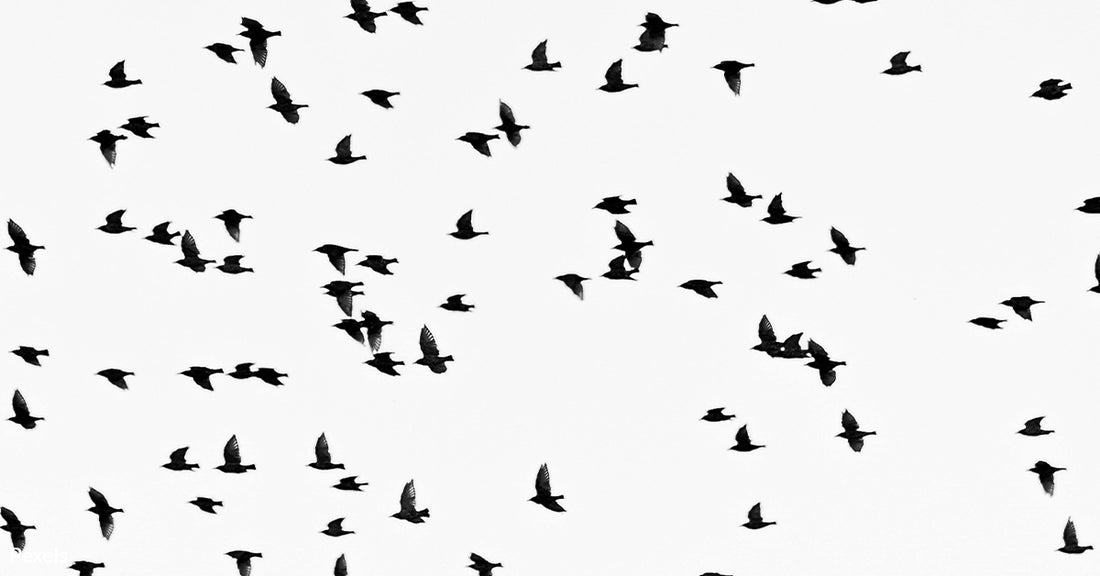Birds Caught in Deadly Eye of Hurricane Helene Face a Fight for Survival
Matthew Russell
Photo: Pexels
When Hurricane Helene made landfall as a powerful Category 4 storm, it didn’t just wreak havoc on the southeastern United States. It also trapped thousands of birds inside its eye, raising concerns about their survival and the broader effects of the hurricane on migration patterns.
The calm center of a hurricane, or its eye, often becomes a temporary refuge for birds. But when it comes to intense storms like Helene, being caught in the eye can mean becoming trapped in a dangerous situation, as strong winds in the storm's eyewall make escape nearly impossible.

Birds Trapped in the Eye
During the peak of Hurricane Helene, weather radars captured a mass within the eye of the storm over Florida. Experts quickly realized it was a flock of birds caught inside. According to a report by Vox, the birds were likely drawn to the eye because of the calm conditions, only to find themselves unable to escape the violent winds surrounding them.
Bird migration expert Andrew Farnsworth of the Cornell Lab of Ornithology pointed out that this phenomenon, while remarkable, is not uncommon.
Storms like Helene can blow seabirds far inland, often depositing them in habitats where they struggle to survive.
“It’s a challenging situation,” Andrew Farnsworth, a bird migration expert at the Cornell Lab of Ornithology, told Vox. “We know that birds do die in these things.”
Birds such as petrels and frigatebirds were reported as far inland as Tennessee.
Hurricane-Induced Bird Migration
Helene's arrival coincided with the fall migration of millions of birds. Migration maps showed that while the storm was at its height, birds avoided its path, altering their migration routes. The Pittsburgh Post-Gazette reported that over half a billion birds migrated in large concentrations west of the hurricane, using the storm's strong winds to aid their journey.
Bob Mulvihill, an ornithologist at the National Aviary, observed that birds in the storm’s path avoided the Atlantic flyway, opting for the Mississippi flyway instead. This shift was a strategic move, given the risk that the hurricane posed to their usual migration paths.

Surviving the Eye of the Storm
Though some birds manage to use the eye of the storm as a refuge, many face extreme challenges. Once inside, they are deprived of food and rest, sometimes for days. As BirdsEye Birding explains, seabirds like frigatebirds can find themselves hundreds of miles from their home habitats, exhausted and disoriented. These birds often have to make a long, difficult journey back to their natural environment once the storm dissipates.
There have been instances where birds have done the unthinkable—flying directly through hurricanes. In one notable case, a tagged whimbrel was tracked flying through Hurricane Irene in 2011, a feat that astonished researchers. They believe that migratory birds, like this whimbrel, rely on their fat stores built up for migration to give them the energy needed to power through such dangerous weather conditions.

The Impact of Stronger Storms
Stronger hurricanes like Helene are more likely to trap birds in their eyes due to the sheer force of their winds and dense thunderstorms. A study led by Matthew Van Den Broeke from the University of Nebraska-Lincoln analyzed 33 hurricanes between 2011 and 2020 and found a correlation between hurricane intensity and the number of birds trapped inside. The denser the storm, the larger the number of birds within the eye, with some storms containing bioscatter signatures that indicated massive bird populations. The findings were detailed in a report from UNL Today.
This phenomenon has long-term ecological implications. Hurricanes can disrupt the normal migration routes of birds, potentially altering population dynamics or introducing invasive species to new regions. The challenge for researchers now is to better understand these impacts and predict how future, more intense storms might further disrupt bird populations.

The Evolving Resilience of Birds
While hurricanes pose significant risks to bird populations, it’s important to remember that birds have evolved to cope with these natural disasters. They can detect subtle changes in atmospheric pressure, giving them an early warning of approaching storms.
“They’ve adapted to this, they’ve evolved with it,” Farnsworth told Vox. “Yes, storms are getting more extreme. But birds know how to deal with these things.”
In the days following Hurricane Helene, experts witnessed an "explosion" of birds resuming their migration routes once the skies cleared, Vox reports.
Hurricane Helene left a lasting impact not just on human communities but on migratory bird populations as well. While many birds were trapped inside the eye, altering their migration patterns, others used the storm’s winds to their advantage. As storms grow more powerful, researchers will need to closely monitor the effects on bird populations, which may hold clues to their long-term survival and adaptation strategies.
Birds are master navigators, but hurricanes like Helene prove that even these seasoned travelers can be thrown off course by nature’s most powerful forces. Still, their adaptability offers hope for the future, as they continue to navigate a changing climate.
We need your support to help people and pets impacted by this devastating hurricane. Donate now!
Matthew Russell is a West Michigan native and with a background in journalism, data analysis, cartography and design thinking. He likes to learn new things and solve old problems whenever possible, and enjoys bicycling, spending time with his daughters, and coffee.




















